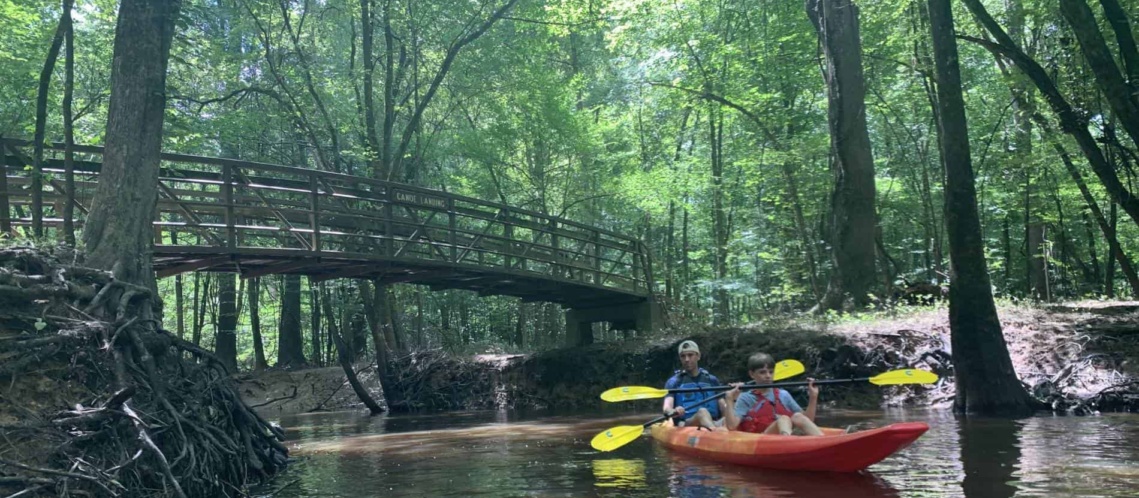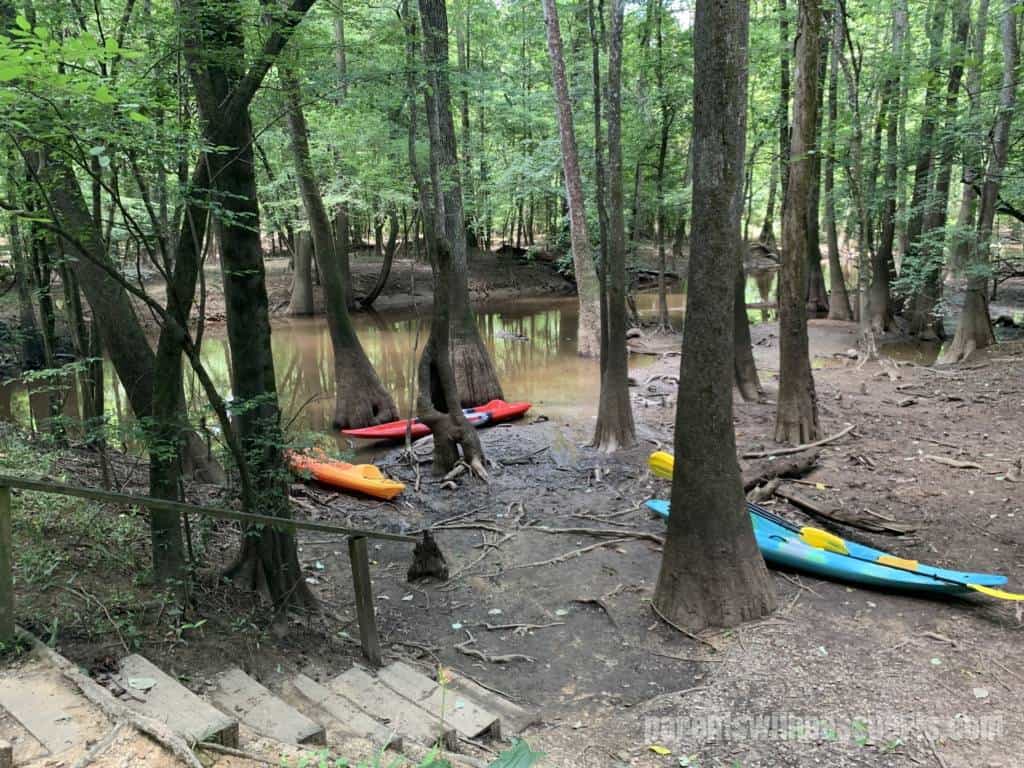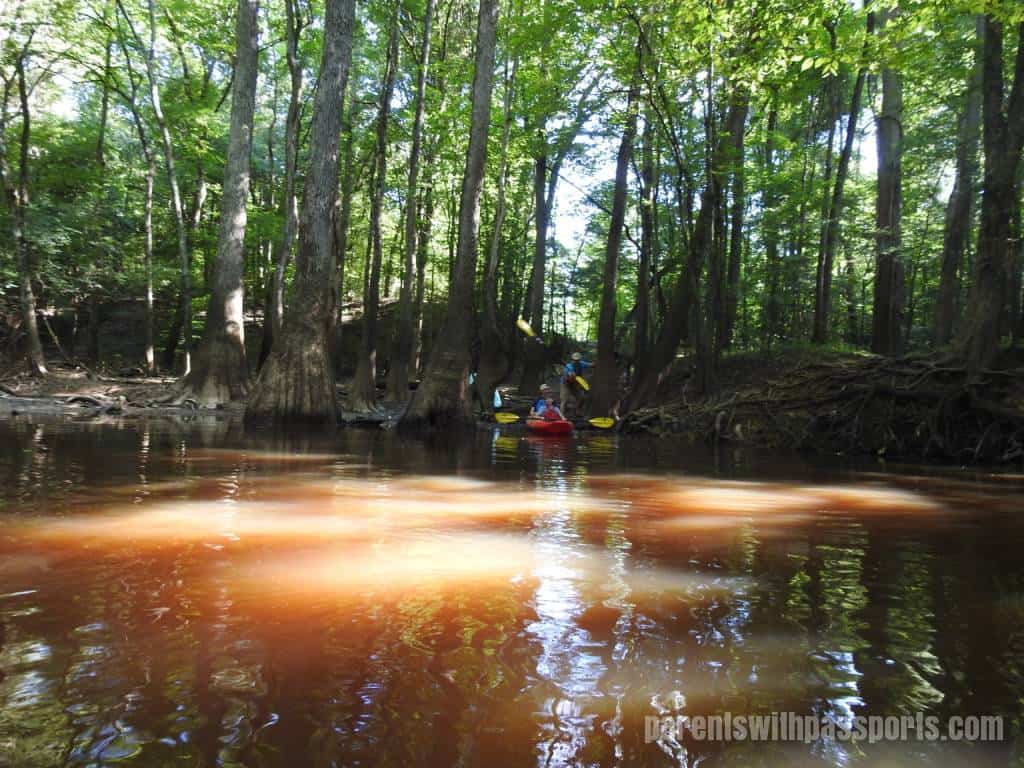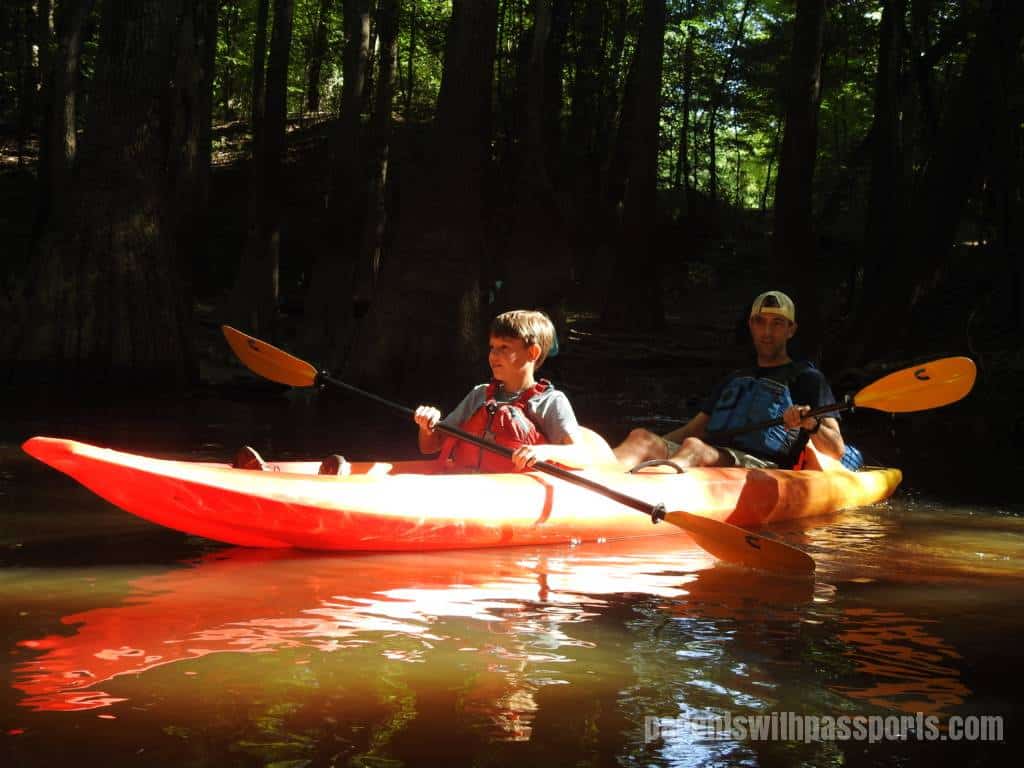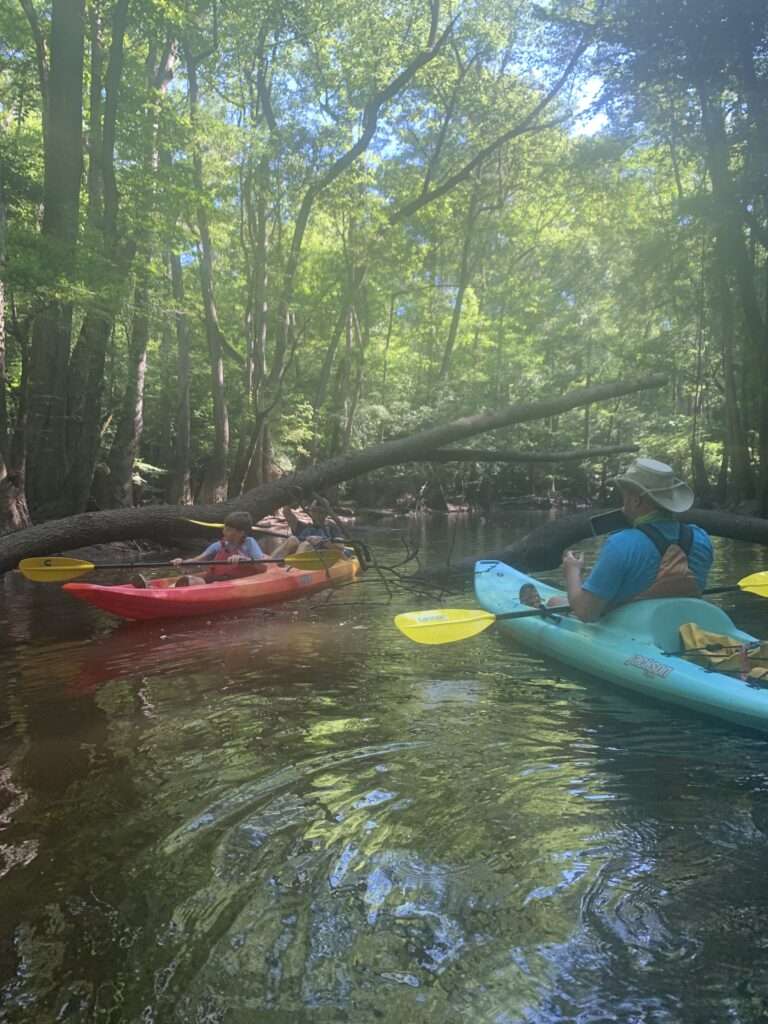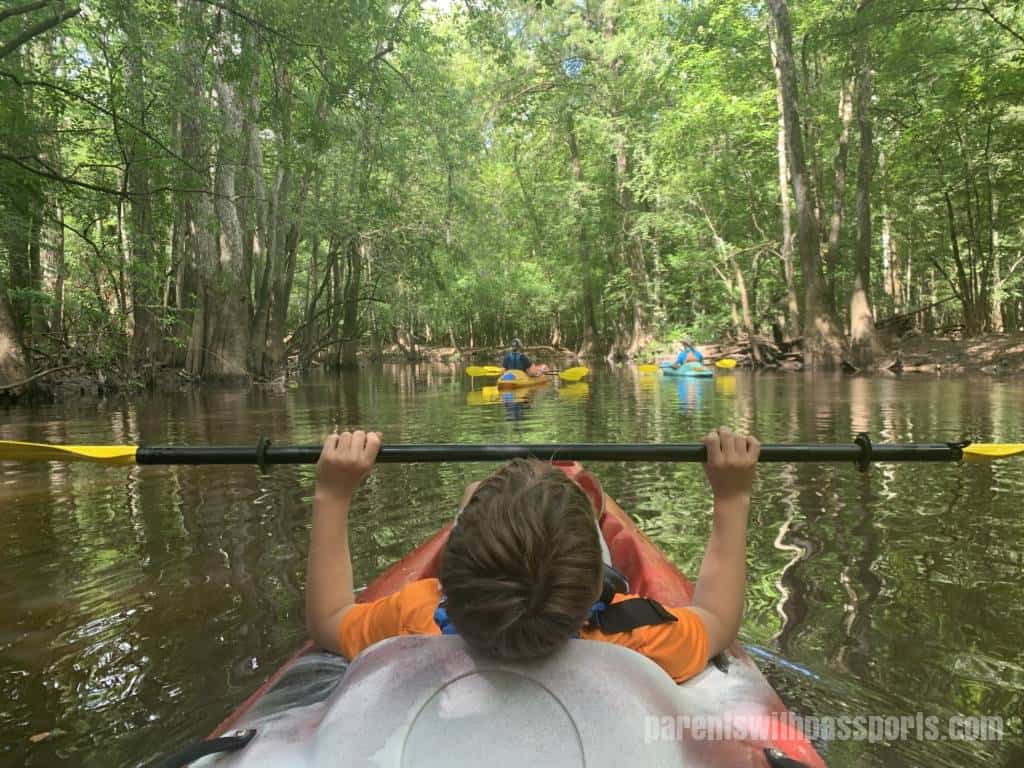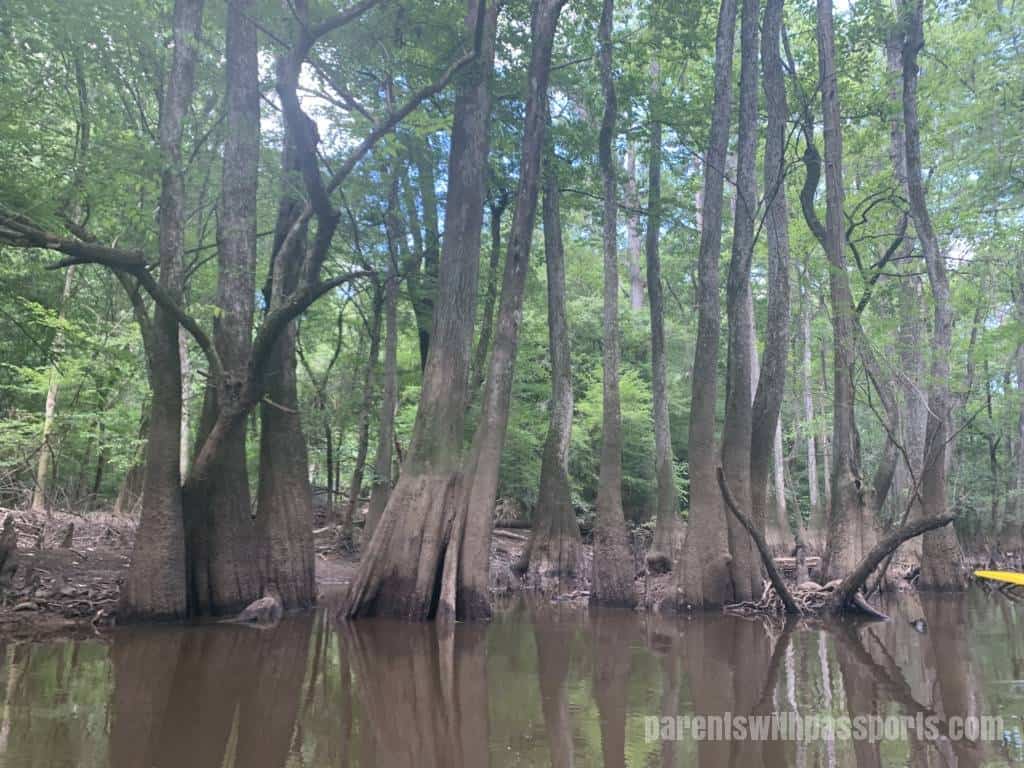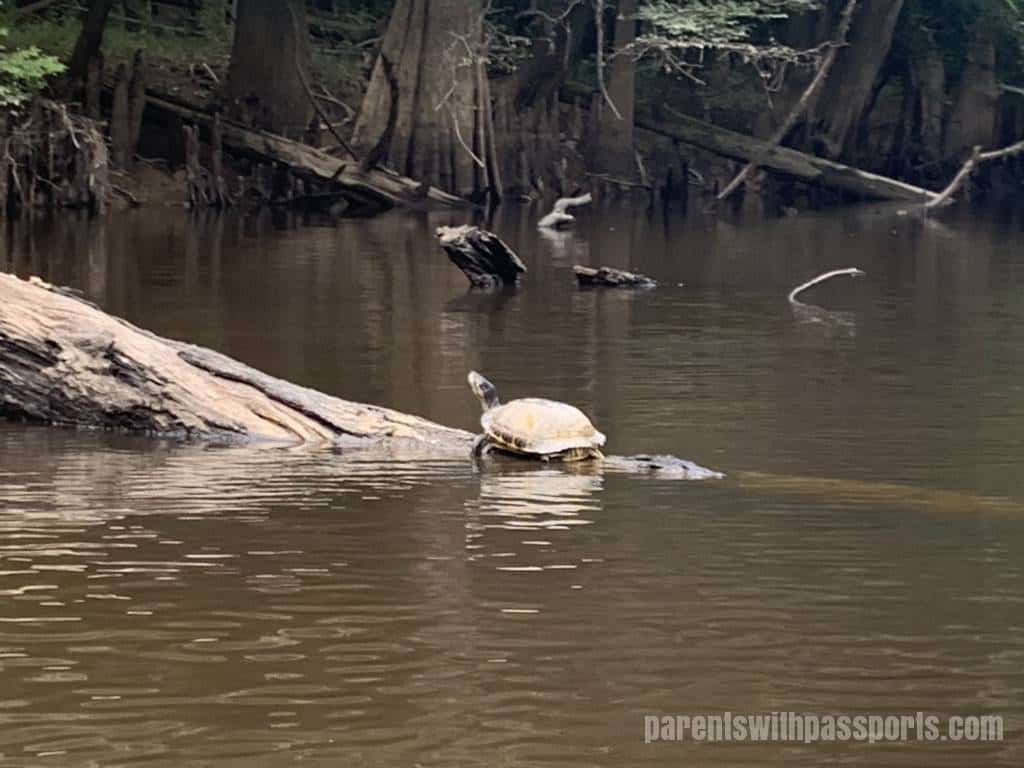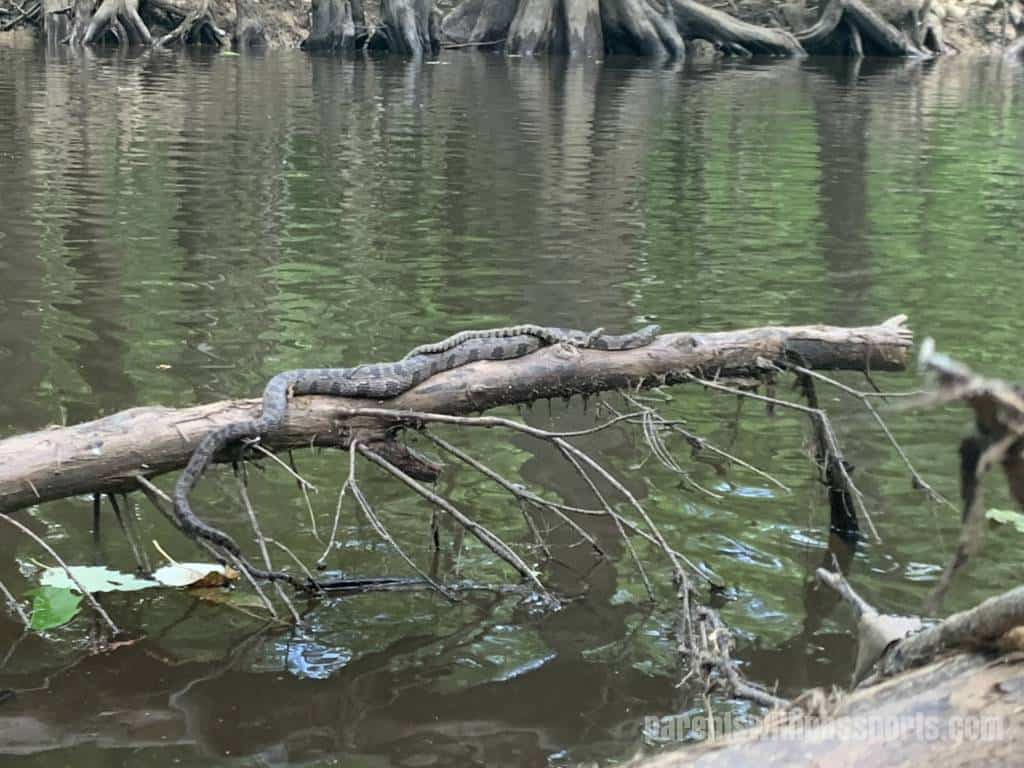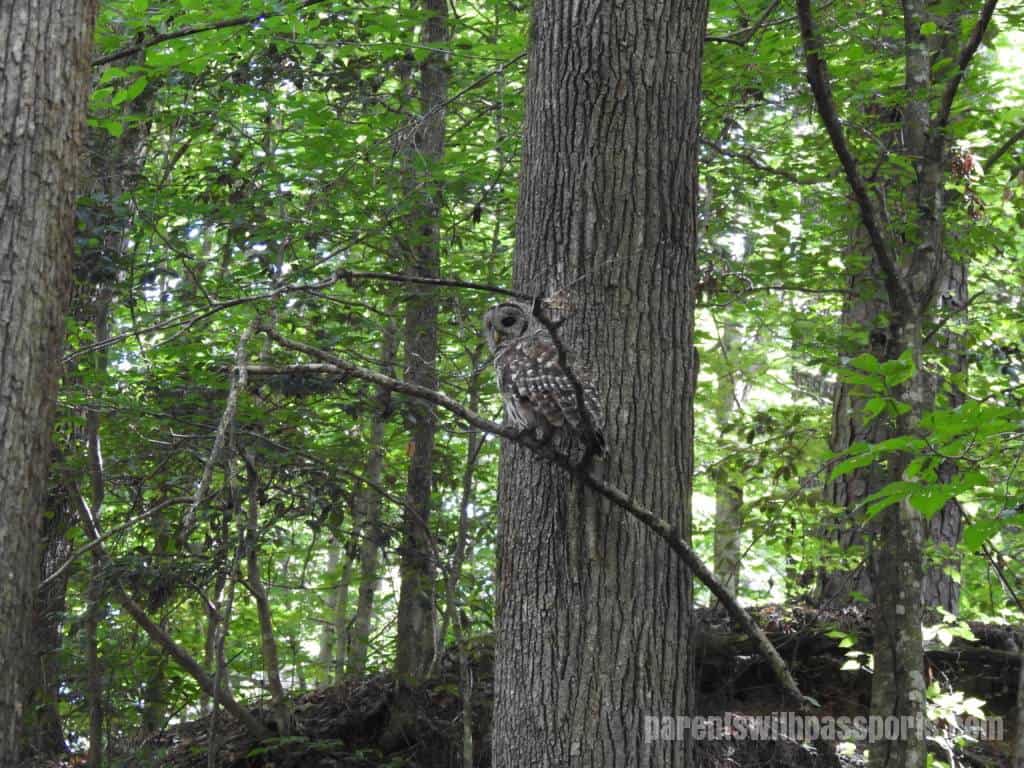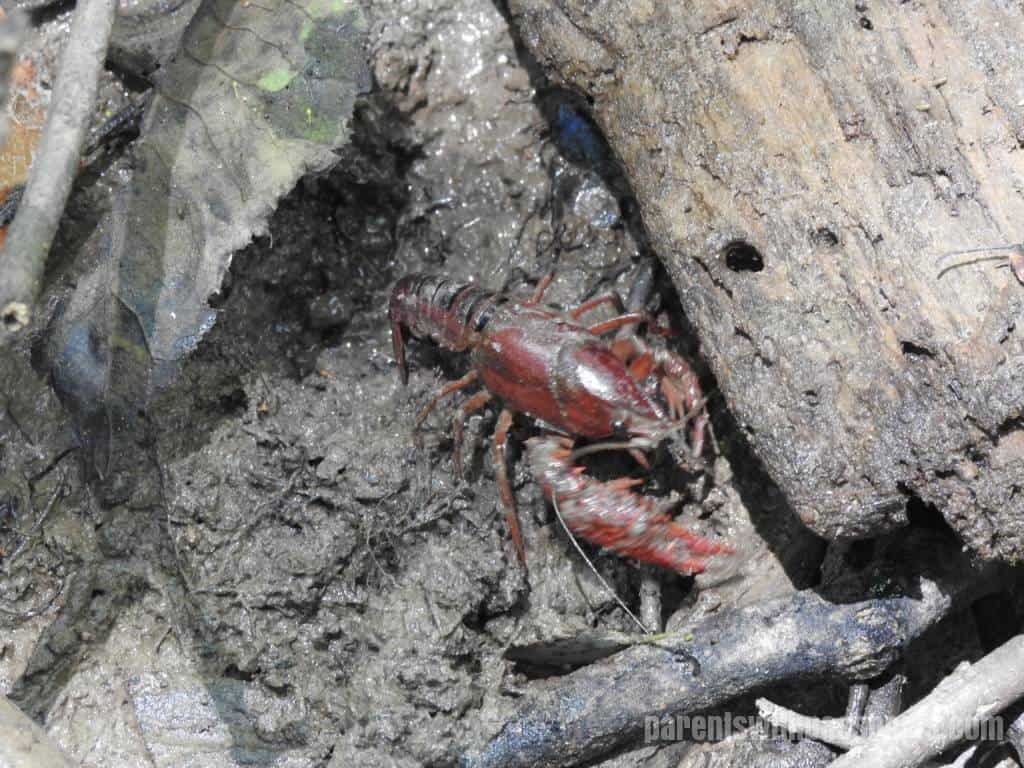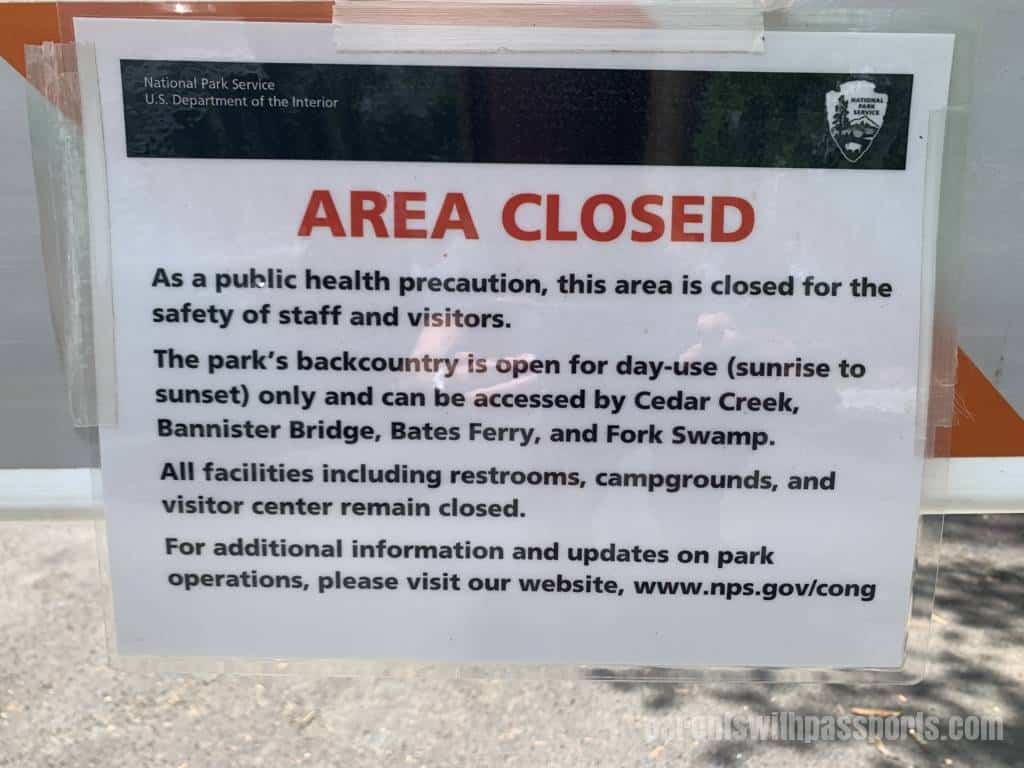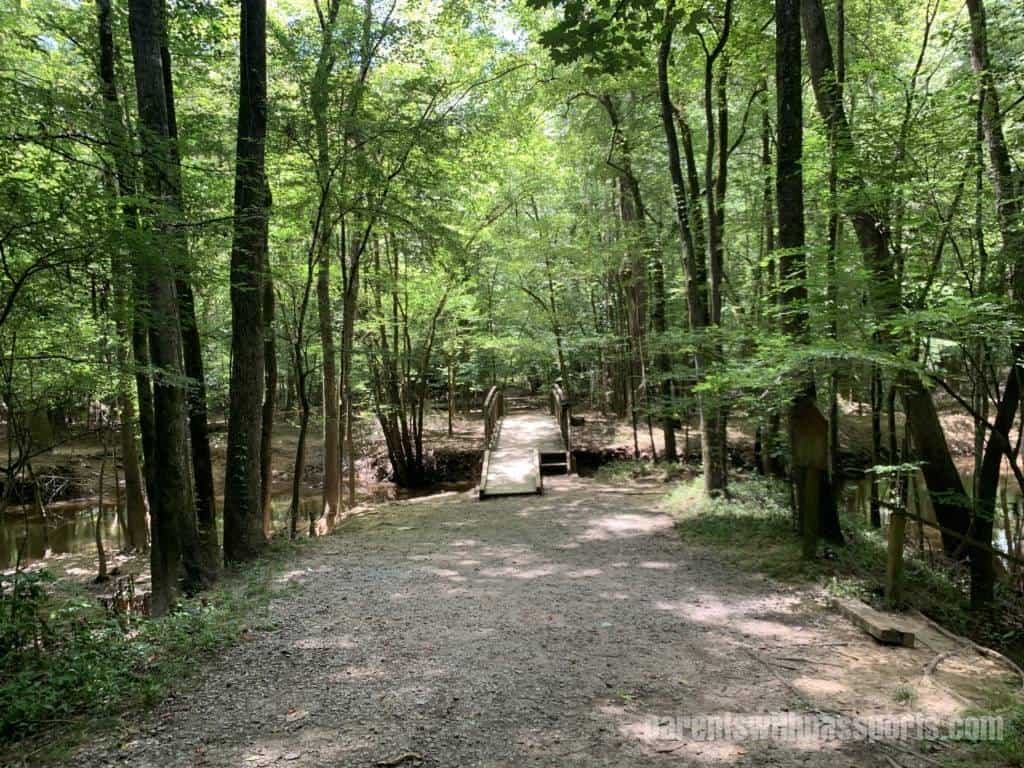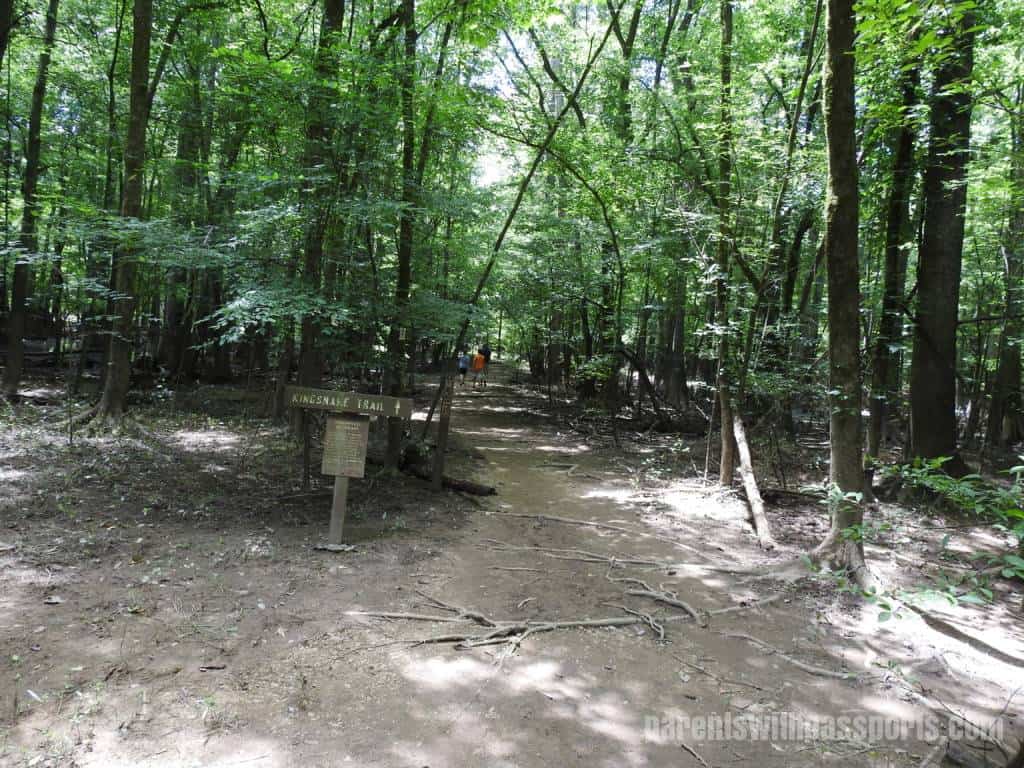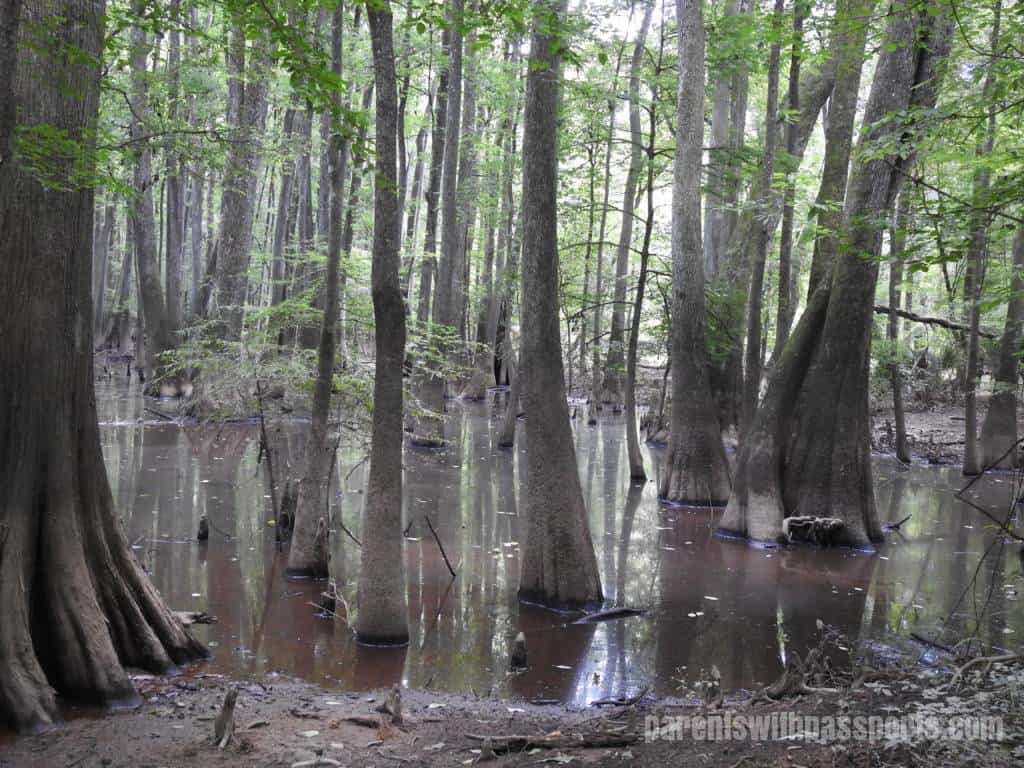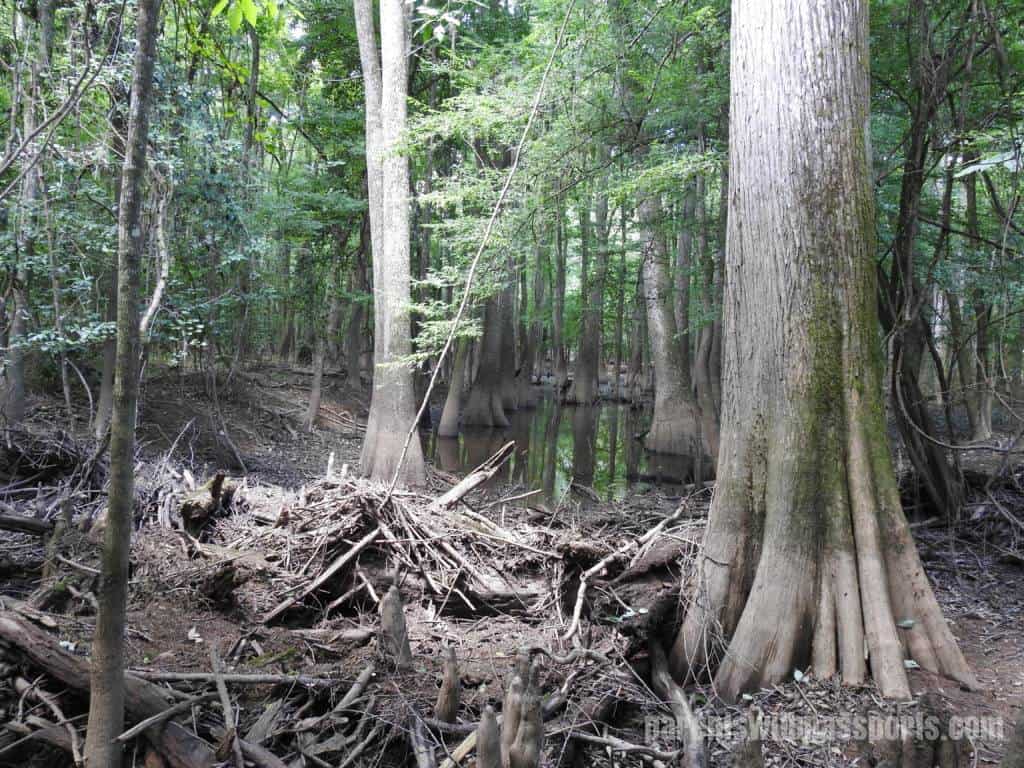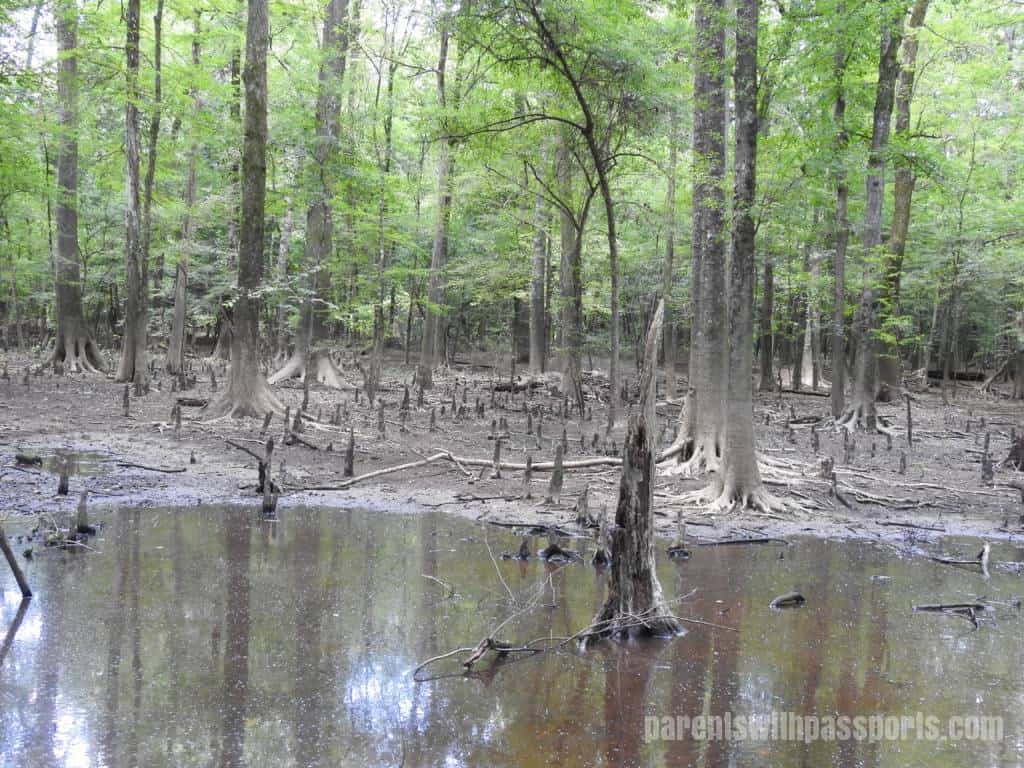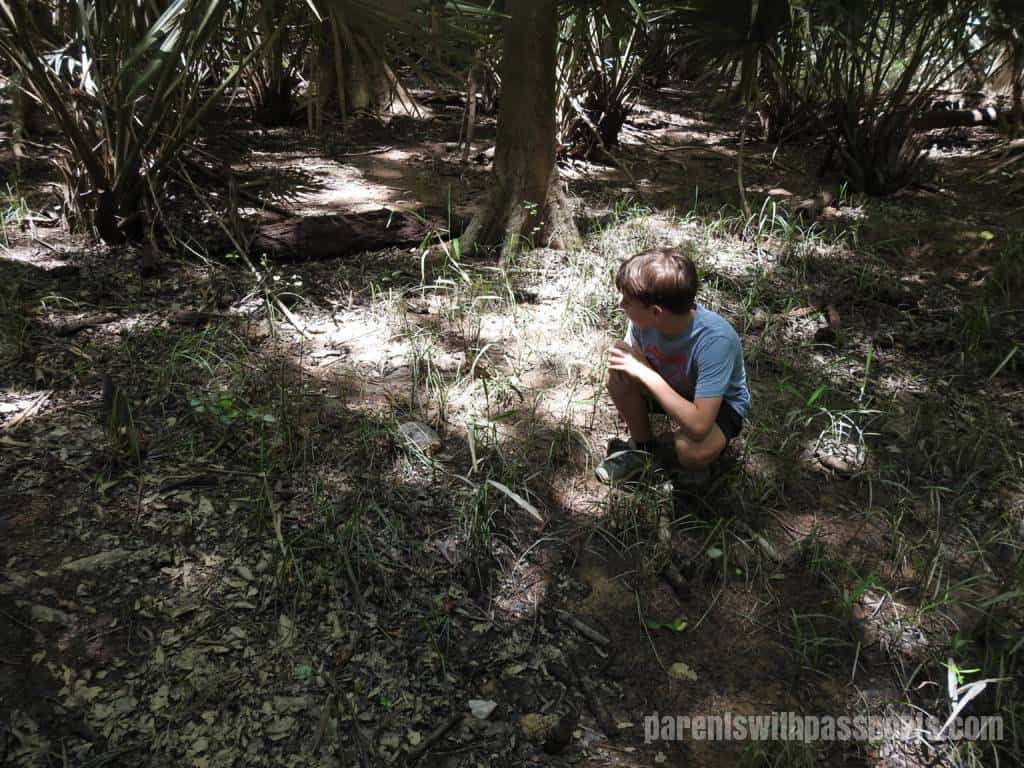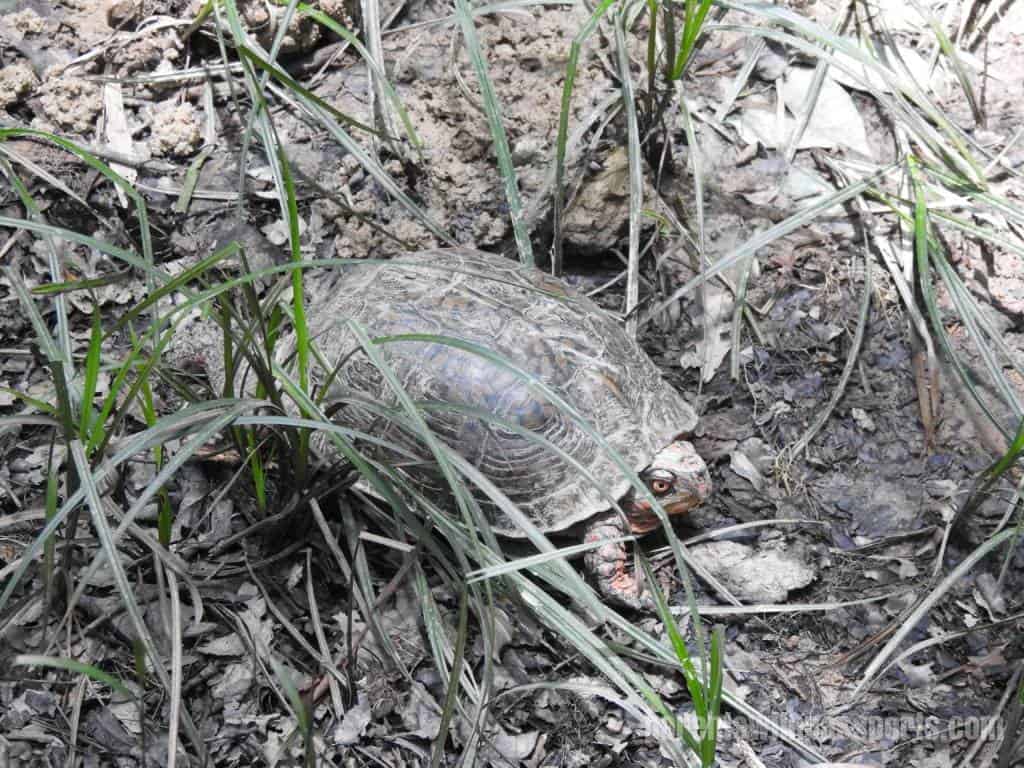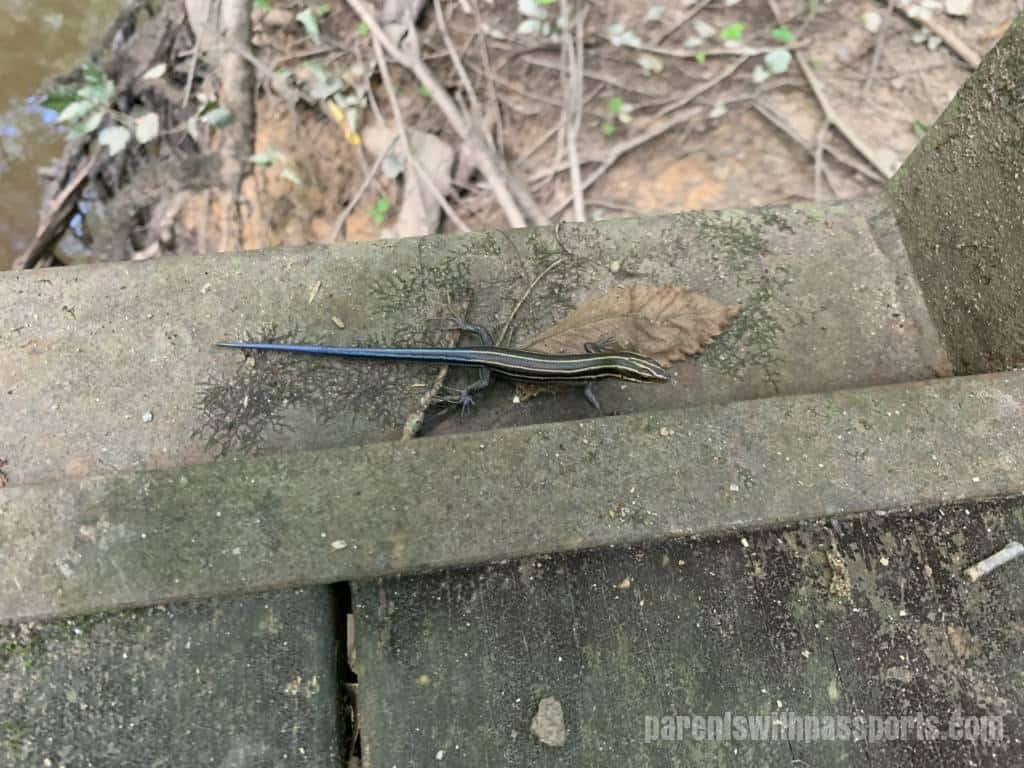By mid-June (3 months into quarantine), I was itching for something more than local parks and hikes. We had our Hilton Head beach trip coming up but I wanted to do something new and different (yet still safe in a Covid-19 world). To fill my travel void, I had been reading lots of travel articles (even more than usual!) to get ideas for US-based trips. National parks are always an appealing option, but most of the major ones are a plane ride away. I read a few interesting articles about under-rated (and therefore under-crowded) national parks and was thrilled to find that one of them was less than a 2 hour drive from Charlotte – Congaree National Park.
Designated a national park in 2003, Congaree is one of the youngest and smallest American national parks. Though it is tempting to refer to its 26,000 acres as mostly swamp land, its proper classification is “old growth bottomland hardwood forest”. There are more than 25 miles of hiking trails but the best way to explore the park’s unique surroundings is in the water.
The Cedar Creek Canoe Trail is 15 miles long and can be explored via canoe or kayak. The park itself does not rent any equipment but their website recommends a few Columbia-based companies that do. The companies offer lots of options – guided tours of varying length, canoe/kayak rentals for pick-up and rentals for delivery to the park launching point. Since we didn’t have a trailer or another way to transport the kayaks, we ruled out picking them up ourselves. Although we have all kayaked before, we thought it still made sense to do a guided tour since this was unfamiliar territory. We booked through JK Adventure Guides.
We booked a 9am tour and made the roughly 1.5 hour drive from Charlotte on a Saturday morning. Our guide Doug met us at the Kingsnake Trail entrance and we were happy to discover that we were the only group in the tour. The company had only recently resumed tours after its covid closure, and for safety reasons were trying to keep tours private (at no additional charge). We appreciated the additional safety measures taken and felt like this was a very socially distanced, covid-safe activity. We were fitted with life jackets and then carried the Kayas down to the launching point.
Once in the water, Doug explained that the creek is more navigable for a longer stretch in the downstream direction but that we would head upstream first for a small portion. We headed out and were very quickly glad that we had opted for a guided tour. While technically you just follow the creek, in reality there is a fair amount of maneuvering that has to happen to continue at many points due to downed trees and log jams. Places that I would have considered a dead-end, Doug navigated through and led us easily to the other side.
We turned back after about 15 minutes and I was happily surprised that there was not a noticeable difference in effort required to paddle upstream. (This was especially important since we would continue past our starting point and go significantly further downstream before having to head back up at the end of the tour.) The current is almost non-existent, making this a great place for beginners and kids to kayak. (Although the kids still felt the need to take frequent breaks…)
The scenery was really amazing. It felt like we were worlds away from Charlotte. The park has many “champion trees”, so designated because they are significant among their species. The park is home to the tallest known trees of 15 different species. Dubbed the “Redwoods of the East”, the massive trees formed a canopy overhead that kept us cool even on a humid southern summer day.
The water level of the creek can fluctuate as much as 10 feet and you could see along the banks of the creek how high the water had recently risen. This was another good reason to have a guide – when the water is low, it is harder to navigate and when it is high, it is easier to get lost as tributaries open up that can be mistaken for the main trail. It was amazing to me how these majestic trees could remain standing under these varying circumstances – sometimes fully submerged in water and sometimes growing out of black silt.
There was also a good bit of wildlife spotting along the way. Although both boys were sorely disappointed not to see any otters (the area where they primarily live was still closed under the phased Covid reopening) we did see a variety of snakes, turtles, fish, crayfish, birds and owls. One more plug for going with a guide – Doug knew which snakes were poisonous and which were not. Definitely useful information as we saw a ton of snakes!
Our tour was just shy of 3 hours and we really enjoyed it. After being cooped up in the house for months, it felt great to be outdoors exploring someplace new. It was so peaceful floating along on the creek, surrounded by beautiful scenery. We passed a few fisherman on the banks but otherwise saw nobody out on the creek. It’s somewhat ironic that an isolated tour like this would feel like the perfect break from quarantine, but it was a wonderful escape from both our house and the craziness of the world today. I loved just being surrounded by the sights and sounds of nature, feeling like we had no worries in the world (for a few hours at least).
I highly recommend JK Adventure Tours. Doug was a great guide – knowledgeable, friendly, and helpful. Even if you are experienced kayakers, I think there is a huge value to having a guide if you have never kayaked in the area before. He shared tons of history and nature facts about the area that really helped us get more out of the trip. He guided us through a few tricky passes and kept us on course. And I love that he took photos and videos for us and posted a compilation of the trip on their Facebook page.
After we finished kayaking, we ate the picnic lunch we had packed and then went for a hike. We had a false start due to covid closures – the main park entrance was still closed and the boardwalk trail that we had hoped to hike was not accessible. We doubled back to where we had kayaked and headed out on the Kingsnake Trail. The entire trail is 12 miles long but we decided to just go about 20 minutes out and then turn around and come back.
This trail is a favorite for birders, as the proximity to the creek draws many different species. The trail is ranked difficult, but we didn’t go far enough to have any problems. The scenery was much the same – beautiful old trees emerging out of shallow swamps and deep water alike. The thick canopy blocking a lot of the light and the lack of undergrowth almost made my pictures look like black and white photographs (at least the bottom portion).
The otter disappointment hadn’t worn off yet, but we were glad to find this turtle and blue-tailed skink on our way back out.
Overall we had a great outing in Congaree National Park. It was great to get out exploring again and neat to discover that such a unique place is so close to us. (We will definitely be going back to find those otters and maybe to see their famous synchronous fireflies.) Congaree was a great reminder to me that we don’t always need to fly to faraway places to explore something new and different. Unique places and experiences can be found in our own backyard too.
